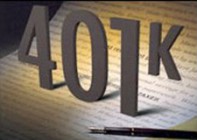Norhill Wealth Strategies Report – April 11
April 12, 2011, 7:03 pm
Filed under: Consumer confidence, Economic Outlook, Economic Recovery, Gross Domestic Product, Inflation, Norhill Wealth Strategies Report, Retirement Investing | Tags: credit demand, Economic crosswinds, economic week ahead, Inflation, Market Updates, Norhill Wealth Strategies Report, service sector slows, Warren Elkin
Filed under: Consumer confidence, Economic Outlook, Economic Recovery, Gross Domestic Product, Inflation, Norhill Wealth Strategies Report, Retirement Investing | Tags: credit demand, Economic crosswinds, economic week ahead, Inflation, Market Updates, Norhill Wealth Strategies Report, service sector slows, Warren Elkin
The Fed faces economic crosswinds
The Federal Reserve Board took center stage this week, as its most recent release highlighted internal debate about its efforts to stimulate the economy while considering inflationary pressures such as fast-rising food and oil prices. Initial jobless claims fell again, but so did a leading indicator of service-sector activity.
Fed officials mixed on inflation
Federal Reserve officials differed in their outlook on the economy, according to the recently released minutes of the Federal Open Market Committee’s March 15 meeting. Members generally agreed that economic growth is slowly gaining traction, but some are concerned that rising commodity and energy prices could fuel higher inflation. According to meeting minutes, “A significant increase in longer-term inflation expectations could contribute to excessive wage and price inflation, which would be costly to eradicate.” Federal Reserve officials appear to be split on the dangers of inflation, raising questions about whether the Fed is falling short on its dual mandate: to promote full employment and to keep prices stable. They are likely to continue this debate, while also deciding how long to continue their quantitative easing bond-buying program and maintain interest rates at record lows.
Credit demand on the rise
Outstanding demand for consumer credit jumped by $7.6 billion in February, the fifth consecutive monthly increase. The figures continued a recent trend that shows an interesting split in the type of credit issued: Non-revolving credit rose by $10.3 billion, boosted mainly by rebounding vehicle sales, while revolving credit fell $2.7 billion for the month. The Federal Reserve report said that consumers appear to be using cash on hand (rather than credit cards) to finance smaller purchases, even as some large retailers reported brisk preliminary sales figures for March.
Service sector slows
The rate of service-sector growth fell for the first time in seven months according to figures released by the Institute for Supply Management (ISM). The ISM nonmanufacturing index dipped to 57.3 in March from 59.7 in February, raising concerns that spiking oil prices may be putting the brakes on the economy. Though readings above 50 indicate expanding activity, the index was below the first quarter average of 59, raising concerns that the economy isn’t sufficiently expanding to create new jobs. The service sector accounts for almost 70% of the nation’s economic activity and is considered a vital measure of overall economic strength.
The economic week ahead
International trade figures will be announced Tuesday, followed Wednesday by reports on retail sales, business inventories, and the Federal Reserve’s Beige Book of economic activity. The producer price index will be released Thursday, and the week will conclude Friday with the consumer price index and a report on industrial production.
Markets Update
For the week ended April 8, the S&P 500 Index fell 0.3% to 1,328 (for a year-to-date total return-including price change plus dividends-of about 6.2%). The yield of the 10-year U.S. Treasury note rose 13 basis points to 3.59% (for a year-to-date increase of 29 basis points).
Warren Elkin of Norhill Financial is your safe money strategist. When it comes to your hard earned dollars, he can keep your money secure as it grows. Warren Elkin can be reached toll free at 877-476-5051- or by email at elkininc@aol.com. To learn more about him check out www.warrenelkin.com.
Leave a comment




